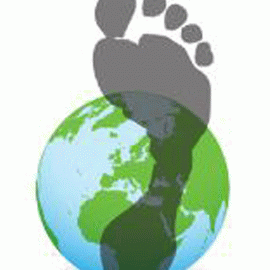Ecological Debt
-
English
-
ListenPause
I’m Peter Neill, Director of the World Ocean Observatory.
In 1992, the term “ecological debt” emerged into the international conversation among ecologists and conservationists wherein the production of greenhouse gases by the developed nations of the north, particularly from resources extracted from the less developed nations of the south, was seen as an inequitable balance that had imposed climactic and social changes not included in the calculations of international debt. It was a rich versus poor argument, asserting that the impact of colonial and commercial exploitation of finite natural resources from these nations had not been fully “compensated” by price, royalties or licensing fees, or even the loans made otherwise to these countries by bankers in the north. There was in fact talk of reparations to be paid as compensation for this unequal transactional system. There was at the time, within the context of this discussion, a series of “debt for nature” agreements wherein some part of a nation’s debt was erased in return for the designation of large wilderness areas wherein such natural resources and social impacts occurred as conservation areas and national parks. Some countries took positive advantage of this opportunity, not only to preserve and protect large areas from development but also to refocus their economies on associated tourism. Today, many of these nations would argue that the situation remains mostly unchanged. Some have nationalized their resources and become their own exploiters and agents in the international energy and mineral markets. Some have been less successful to that end and the imbalance remains.
This argument also characterizes positions taken by small island nations in the contemporary climate debate wherein those nations most affected by sea level rise, extreme weather, exhaustion of resources, and poverty, are seeking comparable investment as compensation for circumstance over which they have had no control but are feeling the most direct effect. In the various climate summits of the last two decades, this has been a major issue, with these nations objecting to the un willingness of the large, most developed countries they believe to have caused the problem to not adequately address and invest in the solution. This too, they argue, is ecological debt.
But the situation is even more pervasive than these arguments would suggest. Ecological debt has transcended the physical and political boundaries of any individual nation to become a global phenomenon that involves every person on earth in the calculating and recalculating the sums through collective and individual behaviors worldwide.
The Global Footprint Network is, according to its website, http://www.footprintnetwork.org, “an international think tank working to advance sustainability through use of the Ecological Footprint, a resource accounting tool that measures how much nature we have, and how much we use. This tool is unique in making overshoot measurable – through detailed resource accounts for nations, cities and individuals. By working with governments, investors, and opinion leaders we demonstrate the advantages of making ecological limits central to decision-making.”
The Network’s principal tool is a complex analysis and calculation of each nation’s “ecological footprint,” a determination of the point in time each year when we have exceeded the capacity of land and sea to supply adequate resources for survival as well as absorb the damage of pollutants, greenhouse gases, resource depletion, and other outcomes of unabated consumption. The Network asserts: “Today humanity uses the equivalent of 1.5 planets to provide the resources we use and absorb our waste. This means it now takes the Earth one year and six months to regenerate what we use in a year. Moderate UN scenarios suggest that if current population and consumption trends continue, by the 2030s, we will need the equivalent of two Earths to support us. Turning resources into waste faster than waste can be turned back into resources puts us in global ecological overshoot, depleting the very resources on which human life and biodiversity depend.”
“Overshoot” is another way of saying “ecological debt;” and we are already out of the green and into the red; we are already dangerously underwater. The Network concludes: “… We must begin to make ecological limits central to our decision-making and use human ingenuity to find new ways to live, within the Earth’s bounds. This means investing in technology and infrastructure that will allow us to operate in a resource-constrained world. It means taking individual action, and creating the public demand for businesses and policy makers to participate.”
We concur. We have only one earth, and only one ocean. That must do us.
We will discuss these issues, and more, in future editions of World Ocean Radio.
In this episode of World Ocean Radio host Peter Neill explains the term “ecological debt” and outlines the work of the Global Footprint Network which uses the Ecological Footprint accounting tool to measure how much nature we have and how much we use. And he’ll assert that, according to the matrix, we are already in global ecological overshoot, having depleted the very resources on which human life and biodiversity depend.
About World Ocean Radio: Peter Neill, Director of the World Ocean Observatory and host of World Ocean Radio, provides coverage of a broad spectrum of ocean issues from science and education to advocacy and exemplary projects. World Ocean Radio, a project of the World Ocean Observatory, is a weekly series of five-minute audio essays available for syndicated use at no cost by college and community radio stations worldwide.
World Ocean Radio Has Gone Global: A selection of episodes is now available in Portuguese, Spanish, French, and Swahili. For more information, visit http://www.worldoceanobservatory.org/world-ocean-radio-global.
Image Credit:
Global Footprint Network, National Footprint Accounts, 2011
- Login to post comments



